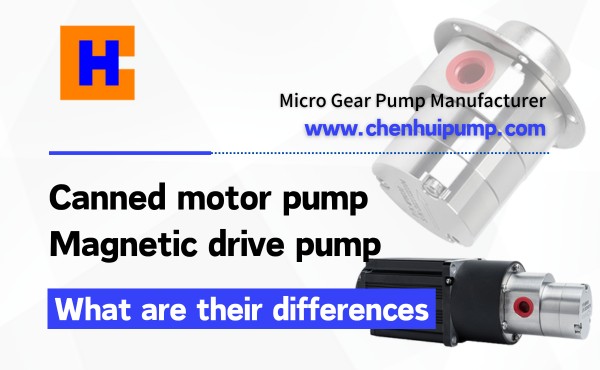A magnetic drive pump operates without seals, relying on a unique design to prevent leaks. It uses magnets to transfer torque from the motor to the impeller through magnetic coupling. This seal-less design ensures safe handling of hazardous fluids, making the mag-drive pump an essential tool for industries requiring leak prevention and operational safety.
What is a magnetic drive pump?
A magnetic drive pump is a type of pump that operates without a mechanical seal. It uses magnetic coupling to transfer power from the motor to the impeller. This design eliminates the need for traditional seals, which are prone to wear and leakage. Magnetic drive pumps are often referred to as “seal-less pumps” due to this unique feature.
The primary purpose of magnetic drive pumps is to provide a reliable and leak-free solution for fluid transfer. These pumps are ideal for handling hazardous, corrosive, or valuable liquids. Industries rely on them to ensure safety, prevent environmental contamination, and maintain the integrity of the fluids being transported. By eliminating seals, mag pumps reduce the risk of leaks and minimize maintenance requirements.
How Magnetic Drive Pumps Work
Magnetic coupling and torque transfer
Magnetic drive pumps rely on magnetic coupling to transfer torque from the motor to the impeller. This coupling consists of two sets of magnets—one attached to the motor shaft and the other to the impeller. When the motor rotates, the magnetic field generated by the motor-side magnets pulls the impeller-side magnets into motion. This synchronized movement eliminates the need for a direct mechanical connection, ensuring a seal-less operation. The absence of physical contact between the motor and impeller reduces wear and enhances reliability.
Impeller and containment shell design
The impeller in magnetic drive pumps plays a crucial role in fluid movement. It resides within a containment shell, which acts as a barrier between the fluid and the external environment. This shell prevents leaks while allowing the magnetic field to pass through and drive the impeller. The materials used for the containment shell are often resistant to corrosion and high temperatures, making these pumps suitable for handling aggressive chemicals. The impeller’s design ensures efficient fluid flow, contributing to the pump’s overall performance.
Differences from traditional pumps
Unlike traditional pumps, magnetic drive pumps do not use mechanical seals. This fundamental difference eliminates common issues like seal wear and leakage. Traditional pumps rely on direct shaft connections, which can lead to fluid contamination or environmental hazards if the seals fail. In contrast, magnetic drive pumps offer a safer and more reliable solution, especially for hazardous or corrosive fluids. Their seal-less design also reduces maintenance needs, making them a cost-effective choice for many industries.
Advantages of Magnetic Drive Pumps
Leak prevention with seal-less design
Magnetic drive pumps excel in leak prevention due to their seal-less construction. Traditional pumps often rely on mechanical seals, which can wear out over time and cause leaks. In contrast, a magnetic drive pump eliminates this risk by using magnets to transfer torque without direct contact. This design ensures a completely enclosed system, making it ideal for handling hazardous or corrosive fluids. Industries that prioritize safety and environmental protection benefit greatly from this feature. The seal-less pump design also reduces the chances of fluid contamination, ensuring the integrity of the transported liquid.
Low maintenance and operational efficiency
The sealless construction of magnetic drive pumps significantly reduces maintenance requirements. Without mechanical seals, there are fewer components prone to wear and tear. This results in lower repair costs and less downtime. Additionally, the efficient use of magnets for torque transfer minimizes energy loss, enhancing the pump’s operational efficiency. These pumps are designed to handle demanding applications while maintaining consistent performance. Their durability and reliability make them a cost-effective choice for industries seeking long-term solutions.
Safe handling of hazardous and corrosive fluids
Magnetic drive pumps provide a safe and reliable option for transporting hazardous and corrosive liquids. The containment shell acts as a barrier, preventing leaks and protecting the environment. This feature is particularly important in industries like chemical processing, where fluid safety is critical. The materials used in these pumps resist corrosion, ensuring longevity even under harsh conditions. By eliminating the risk of leaks, mag-drive pumps contribute to workplace safety and environmental preservation.
Applications of Magnetic Drive Pumps
Chemical and pharmaceutical industries
Magnetic drive pumps play a vital role in the chemical and pharmaceutical industries. These industries often handle hazardous and corrosive liquids that require safe and leak-free transfer. The seal-less design of mag-drive pumps ensures that no harmful substances escape during operation. This feature protects workers and prevents environmental contamination. Additionally, the pumps’ ability to handle aggressive chemicals without corroding makes them a reliable choice for these applications. Their durability and efficiency help maintain consistent production processes, ensuring high-quality outputs.
Food and beverage processing
In food and beverage processing, maintaining fluid purity is critical. Magnetic drive pumps excel in this area due to their enclosed design, which prevents contamination. These pumps are commonly used to transfer liquids like syrups, oils, and beverages. Their energy-efficient operation reduces costs while ensuring smooth and reliable performance. The materials used in mag drive pumps are often food-grade, making them safe for handling consumable products. By providing a hygienic and efficient solution, these pumps support the industry’s strict quality standards.
Water treatment and environmental applications
Water treatment facilities rely on magnetic drive pumps for their ability to handle corrosive liquids, such as acids and alkalis, used in purification processes. These pumps ensure leak-free operation, which is crucial for protecting the environment. Their robust construction allows them to withstand harsh conditions, making them suitable for wastewater management and environmental cleanup projects. The pumps’ efficiency and low maintenance requirements make them a cost-effective solution for long-term use in this industry. Their role in preserving water quality highlights their importance in environmental sustainability.
Comparison with Other Pump Types
Magnetic drive pumps vs. mechanical seal pumps
Magnetic drive pumps and mechanical seal pumps serve similar purposes but differ in design and functionality. Magnetic drive pumps operate without seals, relying on magnetic coupling to transfer torque. This seal-less design eliminates the risk of leaks, making them ideal for handling hazardous or corrosive fluids. In contrast, mechanical seal pumps use seals to prevent fluid leakage. These seals can wear out over time, leading to maintenance challenges and potential leaks.
The absence of seals in magnetic drive pumps reduces maintenance needs. Mechanical seal pumps, however, require regular inspection and replacement of seals. This difference makes magnetic drive pumps more cost-effective in the long run. Additionally, magnetic drive pumps excel in applications where fluid purity is critical. Their enclosed design prevents contamination, which is a common concern with mechanical seal pumps.
Choosing the right pump for specific needs
Selecting the right pump depends on the application and fluid characteristics. Magnetic drive pumps are suitable for industries requiring leak prevention and safe handling of hazardous fluids. Their seal-less design ensures reliability and reduces maintenance costs. For example, industries like chemical processing and water treatment benefit from their durability and efficiency.
Mechanical seal pumps may be a better choice for applications involving high-viscosity fluids or where initial costs are a concern. They are often used in situations where the risk of leaks is minimal. Evaluating factors such as fluid type, operating conditions, and budget helps determine the most appropriate pump for a specific need.
Maintenance Best Practices for Mag-Drive Pumps
Inspecting magnetic components regularly
Regular inspection of magnetic components ensures the efficient operation of magnetic drive pumps. Over time, magnets may lose strength due to exposure to high temperatures or corrosive environments. Technicians should check for signs of demagnetization or physical damage. A weakened magnetic field can reduce torque transfer, leading to performance issues. Using a gauss meter helps measure the magnetic strength accurately. Industries relying on these pumps benefit from scheduled inspections, as they prevent unexpected failures and maintain operational reliability.
Cleaning and preventing buildup
Cleaning the pump components is essential to prevent buildup that can hinder performance. Residues from fluids, especially in chemical or food processing applications, may accumulate on the impeller or containment shell. This buildup can reduce efficiency and increase wear. Operators should disassemble the pump periodically and clean all parts with appropriate solutions. Non-abrasive cleaning agents work best to avoid damaging the materials. Keeping the pump clean ensures smooth operation and extends its lifespan.
Monitoring for wear and tear
Monitoring for wear and tear helps identify potential issues before they escalate. Components like the impeller, bearings, and containment shell experience gradual wear during operation. Regular visual inspections and performance checks can detect early signs of damage. For example, unusual noises or vibrations often indicate worn-out parts. Replacing damaged components promptly prevents further deterioration and costly repairs. A proactive approach to maintenance ensures the pump operates efficiently and safely.
Conclusion
A magnetic drive pump operates with a seal-less design, using magnetic coupling to transfer torque efficiently. This innovative approach prevents leaks and ensures safe fluid handling. Its durability and low maintenance requirements improve operational efficiency. By reducing downtime and repair costs, these pumps provide a reliable solution for industries prioritizing safety and performance.













